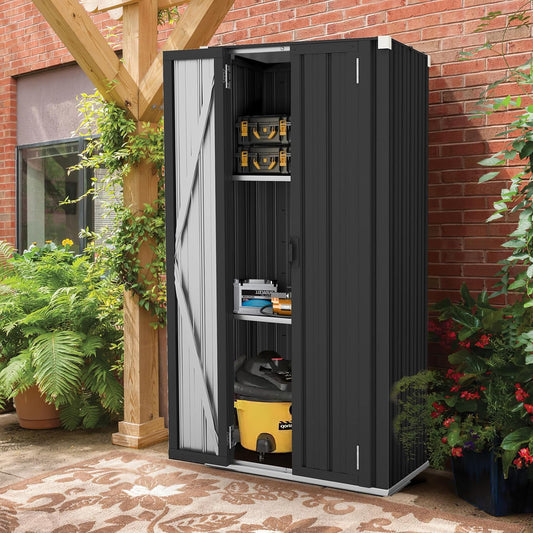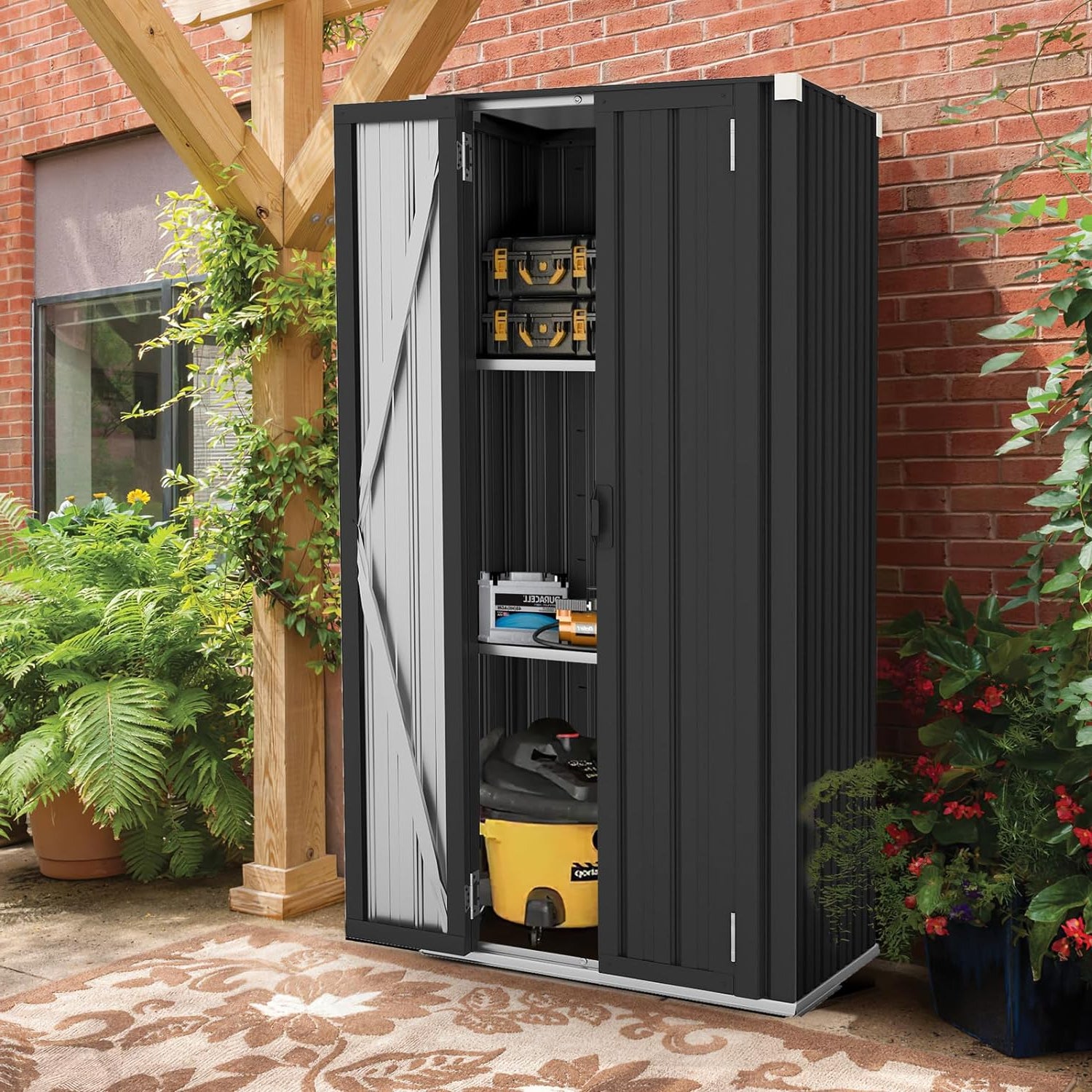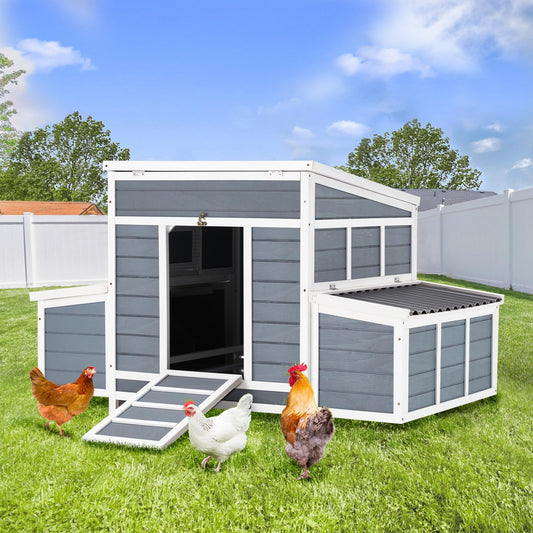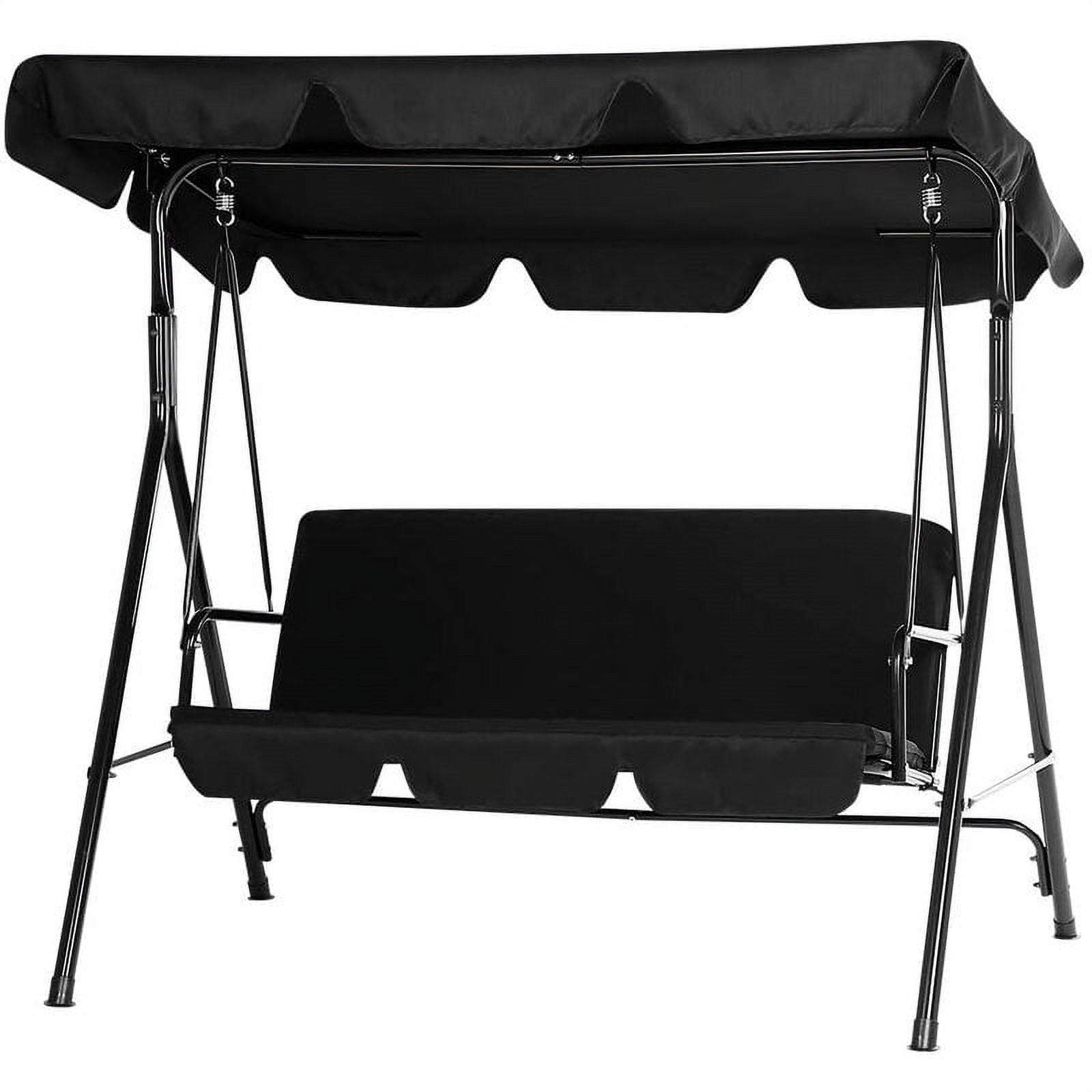A strong, defined chest isn’t just about aesthetics—it’s key to upper body strength and functional movement. From lifting groceries to pushing open heavy doors, chest muscles (pectoralis major and minor) are involved in nearly every upper body action. That’s why choosing the right chest workout equipment is so important for both fitness enthusiasts and casual gym-goers.
Chest fly workout machine has grown in popularity over the years, and for good reason. A 2024 survey of gym users found that 68% of beginners and 52% of intermediate lifters regularly use the machine, citing its ease of use and safety. Unlike free weights, which require balance and form mastery, this machine guides your movement, making it less intimidating for those new to upper body workout equipment.
But who really needs a chest fly workout machine? It’s ideal for:
- Beginners who want to build chest strength without risking injury.
- Anyone recovering from shoulder or back injuries (the controlled movement reduces strain).
- Lifters looking to isolate chest muscles (great for targeting weak areas).
- Home gym owners who want compact, effective equipment for chest workout.
Transition: Now that we know why it’s popular, let’s break down what a chest fly workout machine actually is and how it works.
1. What Is a Chest Fly Workout Machine?
If you’ve never used one before, a chest fly workout machine is designed to mimic the motion of a “fly” exercise—bringing your arms together in front of your chest while keeping them slightly bent. It’s a piece of upper body workout equipment focused on isolating the chest muscles, rather than engaging multiple muscle groups at once.
Basic Structure
Most chest fly workout machine models share these core components:
- A padded seat (adjustable for height).
- Two padded handles (or armrests) attached to a resistance mechanism (weight stacks, cables, or springs).
- A backrest (supports your torso to keep you stable during the movement).
- Adjustment knobs (to change seat height, handle position, or resistance level).
The machine is usually stationary, with the handles moving in a fixed arc—this guides your movement and prevents poor form. Some models are standalone, while others are part of a multi-gym setup (great for home gyms short on space).
How It Targets Chest Muscles
The magic of the chest fly workout machine lies in its ability to isolate the pectoral muscles. Here’s how it works:
- When you sit on the machine, your back is supported, and your arms are extended out to the sides (elbows slightly bent).
- As you push the handles together in front of your chest, the chest muscles contract to pull your arms inward.
- The fixed arc of the handles ensures that the chest muscles do most of the work, rather than relying on shoulders or triceps (a common issue with free-weight exercises).
This isolation is key for building muscle definition. A 2023 study published in the Journal of Strength and Conditioning Research found that the machine activates the pectoral muscles 30% more effectively than traditional push-ups for targeted muscle growth.
Difference from Free-Weight Flys
Many lifters wonder how the chest fly workout machine compares to free-weight flys (using dumbbells or cables). Here’s a quick breakdown:
|
Feature |
Chest Fly Workout Machine |
Free-Weight Flys (Dumbbells/Cables) |
|
Movement Control |
Fixed arc guides movement; less room for error |
Requires balance and core stability; form-dependent |
|
Muscle Isolation |
High (focuses solely on chest) |
Moderate (engages shoulders, triceps, and core) |
|
Safety |
Low risk of injury (no falling weights, controlled motion) |
Higher risk (strained shoulders if form is off) |
|
Learning Curve |
Gentle (easy for beginners to master) |
Steeper (requires practice to perfect form) |
|
Versatility |
Limited (only does fly exercises) |
High (can adjust grip, angle, and range of motion) |
For example, a beginner might struggle with dumbbell flys due to balance issues, leading to shoulder strain. The chest fly workout machine eliminates that risk, letting them focus on building chest strength without distraction.
If you’re looking for a chest fly workout machine that amplifies the safety and isolation of machine training while adding versatility, YODOLLA’s Chest Fly Machine is a game-changer. This premium piece of chest workout equipment combines the controlled motion of a machine with unique features that fix common pain points—like rotating handles that protect wrists and intensify chest contractions.

2. Is a Chest Fly Machine a Good Exercise?
The short answer: Yes—for most people. But like any chest workout equipment, it has its strengths and weaknesses. Let’s break down the benefits and limitations to help you decide if it’s right for you.
Benefits for Beginners
For those new to lifting, the chest fly workout machine is a game-changer:
- Guided movement: The fixed arc prevents poor form (e.g., rounding your back or flaring your shoulders), which is a common mistake with free weights.
- Low intimidation factor: No need to load plates or balance heavy dumbbells—just adjust the seat and resistance, and you’re ready to go.
- Quick results: Isolation exercises help build chest definition faster, which is motivating for beginners.
A study of 100 new gym-goers found that those who used the chest fly workout machine for 8 weeks saw a 15% increase in chest muscle size, compared to 8% for those who only did push-ups and dumbbell presses.
Muscle Activation
As mentioned earlier, the machine excels at isolating the chest muscles. But it also engages secondary muscles for stability:
- Primary muscles: Pectoralis major (upper and lower chest), pectoralis minor.
- Secondary muscles: Anterior deltoids (front of shoulders), triceps (minor engagement), serratus anterior (supports the chest).
This makes it a great complement to compound exercises like bench presses, which engage multiple muscle groups. By adding the chest fly workout machine to your routine, you can target weak spots (e.g., lower chest) that might be neglected by compound lifts.
Safety Advantages
Safety is where the chest fly workout machine really shines—especially compared to other equipment for chest workout:
- No falling weights: Unlike dumbbells, which can drop if you lose grip, the machine’s handles are attached to a fixed mechanism.
- Reduced joint strain: The controlled movement limits stress on the shoulders and elbows, making it ideal for anyone with joint issues or injuries.
- Stable torso support: The backrest keeps your core and spine aligned, preventing lower back strain.
For example, someone recovering from a shoulder injury can use the machine to rebuild chest strength without putting pressure on the injured joint—something that’s hard to do with free weights.
Limitations to Consider
While it’s a great tool, the chest fly workout machine isn’t perfect:
- Limited functional strength: It’s an isolation exercise, so it doesn’t build the same full-body strength as compound lifts like bench presses or push-ups.
- Less versatility: You can only do fly exercises—unlike dumbbells, which can be used for presses, rows, and more.
- Potential for over-reliance: Beginners might stick to the machine too long, missing out on the balance and stability benefits of free weights.
It’s best used as part of a balanced routine, not a replacement for compound exercises. Think of it as a “finisher” to target chest muscles after your main lifts.
3. Who Should Use a Chest Fly Workout Machine?
While the machine is versatile, it’s not for everyone. Here’s a breakdown of who will benefit most from this chest workout equipment:
Suitable for Beginners
If you’re new to the gym, the chest fly workout machine is the perfect starting point. It lets you learn the feel of chest muscle contraction without the complexity of free weights. For example, a first-time gym-goer might start with 3 sets of 12–15 reps on the machine, gradually building strength before moving to dumbbell flys or bench presses.
It’s also great for those who feel intimidated by the weight room. The machine is self-contained and easy to operate, so you don’t have to worry about asking for help or feeling self-conscious about your form.
For Those Focusing on Isolation
If you’re looking to target specific areas of your chest (e.g., upper chest, lower chest), the chest fly workout machine is ideal. Unlike compound lifts, which engage multiple muscles, this machine lets you zero in on weak spots.
For example, if your lower chest is less developed, you can adjust the seat height to a slightly lower position, which shifts the focus to the lower pectorals. This level of control is hard to achieve with free weights, making the machine a favorite among bodybuilders and anyone chasing a balanced chest.
For Injury Recovery or Safer Chest Activation
Anyone recovering from shoulder, back, or elbow injuries will appreciate the machine’s low-impact design. Physical therapists often recommend it for patients rebuilding upper body strength, as the controlled movement reduces strain on injured joints.
For example, someone with a rotator cuff injury can use the machine to work their chest without putting pressure on the shoulder. The fixed handles keep the arms in a safe range of motion, preventing further damage. It’s also a great option for older adults or those with chronic joint pain who want to stay active without risking injury.
Transition: Now that we know who it’s for, let’s see how the chest fly workout machine stacks up against other equipment for chest workout.

4. Chest Fly Machine vs Other Chest Workout Equipment
With so many options for upper body workout equipment, it’s important to understand how the chest fly workout machine compares to other popular choices. Below is a detailed comparison to help you decide which is best for your goals and experience level.
Key Comparison Table
|
Equipment Type |
Chest Fly Workout Machine |
Dumbbells (Free Weights) |
Barbell Bench Press |
Chest Press Machine |
|
Strength Level Required |
Low (great for beginners) |
Moderate (requires balance/form) |
High (requires core stability/strength) |
Low to moderate (guided movement) |
|
Muscle Isolation |
High (chest-focused) |
Moderate (engages shoulders/triceps) |
Low (full upper body engagement) |
Moderate (chest + triceps/shoulders) |
|
Safety |
High (controlled movement) |
Moderate (risk of dropping weights) |
Low (high risk of injury with poor form) |
High (guided movement) |
|
Versatility |
Low (only fly exercises) |
High (multiple exercises: presses, flys, rows) |
Low (mostly bench presses) |
Moderate (presses + some variations) |
|
Ideal For |
Beginners, injury recovery, isolation |
Intermediate lifters, full-body strength |
Advanced lifters, maximum strength gains |
Beginners to intermediate, compound + isolation |
|
Home Gym Fit |
Compact (some models foldable) |
Requires storage space |
Takes up floor space (needs bench + barbell) |
Compact to medium (standalone models) |
Beginners vs Intermediate Lifters
Beginners: The chest fly workout machine and chest press machine are the best choices. They’re easy to use, safe, and help build foundational strength. Start with the fly machine to learn muscle activation, then move to the chest press machine for compound strength.
Intermediate lifters: Dumbbells and barbell bench press become more valuable for building functional strength and muscle mass. But keep the chest fly workout machine in your routine for isolation work—this helps target weak spots and improve definition.
Home Gym vs Commercial Gym Choices
Home gyms: The chest fly workout machine is a great option if you have limited space. Look for compact, foldable models that don’t take up too much room. It pairs well with a set of dumbbells for a balanced upper body routine.
Commercial gyms: Take advantage of the variety! Use the chest fly workout machine as a finisher after bench presses or dumbbell flys. Commercial gyms often have high-quality machines with adjustable resistance, making it easy to progress as you get stronger.
Real-World Example
Let’s say you’re a beginner with a home gym. You might start with:
- 3 sets of 12 reps on the chest fly workout machine (isolation).
- 3 sets of 10 reps on the chest press machine (compound).
- 2 sets of 15 push-ups (bodyweight functional strength).
As you progress to intermediate, you can add dumbbell flys and barbell bench presses to your routine, using the chest fly workout machine 1–2 times a week to target weak areas.
For a home gym setup that maximizes results and minimizes common pain points, YODOLLA’s Chest Fly Machine is a standout choice. This versatile piece of upper body workout equipment doubles as a pec deck and reverse delt machine, letting you target both chest and rear delts with one unit—perfect for saving space while expanding your training options.

5. How to Use a Chest Fly Workout Machine Correctly
Using the chest fly workout machine correctly is key to getting results and avoiding injury. Even though it’s guided, poor form can still lead to strain or ineffective muscle activation. Follow these steps to master the movement:
Proper Form Basics
Before you start, remember these form rules:
- Keep your back flat against the backrest (no rounding or arching).
- Engage your core (tighten your abs) to stabilize your torso.
- Keep your elbows slightly bent (never locked) throughout the movement.
- Move slowly and controlled—don’t use momentum to swing the handles.
- Breathe: Inhale as you open your arms, exhale as you bring them together.
Seat and Handle Adjustments
The right adjustments ensure the machine targets your chest muscles (not your shoulders). Here’s how to set it up:
- Seat height: Adjust the seat so that the handles are at chest level. When you sit, your arms should be parallel to the floor when extended out to the sides.
- Handle position: Most machines let you adjust the angle of the handles. For general chest work, keep them at a neutral position (not too high or low). For upper chest focus, raise the handles slightly; for lower chest, lower them.
- Resistance level: Start light (20–30 lbs for beginners) to master form. As you get stronger, increase the resistance—you should feel fatigued by the last 2–3 reps of each set.
Step-by-Step Instructions
Sit on the machine and adjust the seat/handles as needed. Place your feet flat on the floor (shoulder-width apart) for stability.
Grab the handles with a neutral grip (palms facing each other) or slight supination (palms up)—whichever feels more comfortable.
Lean back against the backrest, engage your core, and relax your shoulders (don’t hunch them up to your ears).
Inhale slowly as you open your arms wide, keeping your elbows slightly bent. Stop when you feel a gentle stretch in your chest (don’t overextend—this can strain shoulders).
Exhale as you squeeze your chest muscles to bring the handles together in front of your chest. Keep the movement slow and controlled—don’t let the handles slam together.
Pause for 1–2 seconds at the top of the movement (when handles are closest together) to maximize muscle contraction.
Inhale as you slowly return the handles to the starting position. Repeat for 12–15 reps per set (3–4 sets total).
Common Mistakes to Avoid
Even with guided movement, these mistakes can reduce results or cause strain:
- Using too much resistance: This leads to swinging the handles (using momentum instead of chest muscles) and can strain shoulders. Start light and focus on form.
- Arching your back: Rounding or arching your back takes tension off the chest and puts strain on the lower back. Keep your back flat against the backrest.
- Locking your elbows: Straightening your elbows completely can damage joints. Keep them slightly bent throughout the movement.
- Overextending your arms: Opening your arms too wide stretches the shoulder joints beyond their safe range. Stop when you feel a gentle stretch in your chest.
- Breathing incorrectly: Holding your breath can increase blood pressure and reduce muscle oxygen flow. Remember to inhale on the way out, exhale on the way in.
Pro tip: Ask a gym trainer to check your form the first few times you use the machine. They can adjust your seat/handles and correct any bad habits before they stick.
Conclusion
So, is a chest fly workout machine worth using? For most people—yes. It’s a safe, effective piece of chest workout equipment that offers unique benefits, especially for beginners, those recovering from injury, and anyone looking to isolate chest muscles.
At the end of the day, the best equipment for chest workout is the one you’ll use consistently and correctly. The chest fly workout machine checks both boxes—it’s easy to use, delivers results, and keeps you safe. So next time you’re at the gym, give it a try—your chest muscles will thank you!





















